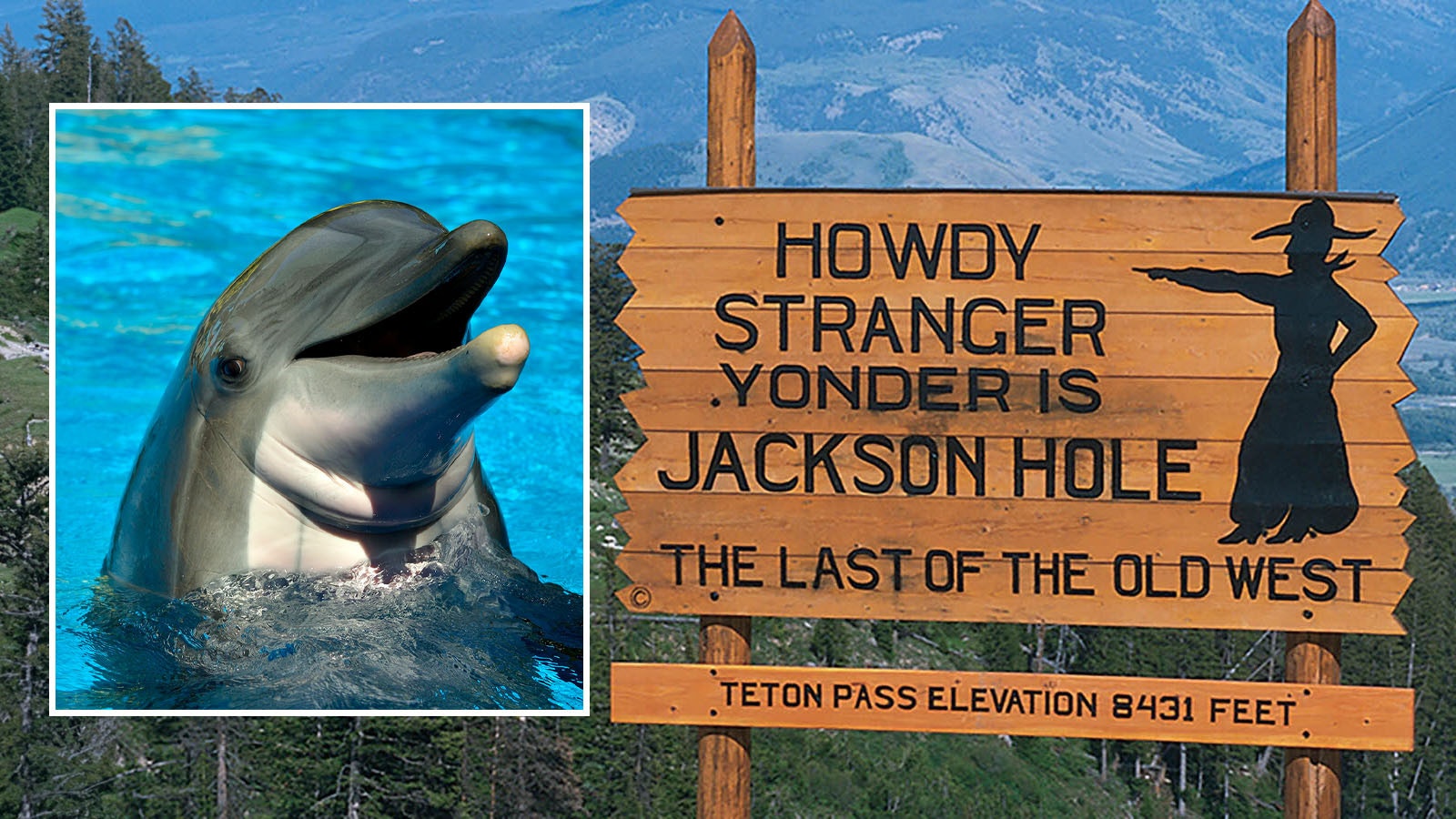Another recently discovered comet should be visible from Wyoming in the early morning darkness, and it’ll be easier to see every night for the next month.
Comet 2025 F2 (SWAN) was discovered by two comet hunters, Vladimir Bezugly from Ukraine and Michael Mattiazzo from Australia, on March 29. It’s already bright enough to spot with binoculars and could get brighter still.
All eyes will be on this comet once it reaches its perihelion, its closest approach to the sun, on May 1. That could be the best night to see this comet soaring through the night sky, but it’s worth a look in the meantime.
“The last reported magnitude of the comet was 7.5 and improving,” said Max Gilbraith, planetarium coordinator at the University of Wyoming. “It's dimmer than the naked eye can detect, but it might get bright enough to see with the naked eye in the next week.”
Another ‘Dirty Snowball’
Comets are basically “dirty snowballs” primarily made of dust and “volatile ices” of water, carbon dioxide and ammonia.
They can be easily spotted by their tails, created as the comet’s volatile ices are vaporized by the energy of the sun, a process called outgassing, which creates a field of gas and debris that can stretch over 18 million miles long.
According to Gilbraith, C/2025 F2 (SWAN) is passing through the constellation Pegasus. That means it can’t be seen in the Northern Hemisphere but will be visible soon.
“It’s making its way through Pegasus toward Andromeda,” he said. “There’s a chance that observers could see it in the early dawn's light, very low on the horizon in the eastern-northeastern sky just before sunrise for the next week or so.”
The comet's current magnitude is 7.5, making it slightly brighter than Neptune but dimmer than Ceres, a dwarf planet between Mars and Jupiter that’s the faintest naked-eye object visible in Wyoming’s darkest skies.
Anyone who wants to see it in the next week will need a pair of binoculars or a low-powered telescope. It'll probably be easier to see the comet's tail than the comet itself.
“It does have a significant tail, and those are best seen through binoculars or a nice telescope because you have a wide field of view,” Gilbraith said. “We should be able to catch it in the early dawn sky for the next week or so.”

Sun Grazer
Comets are usually seen at their best when they’re closest to the sun. Astronomers anticipate that C/2025 F2 (SWAN) will come within 31 million miles of the sun, which is just inside the orbit of the Mercury.
According to EarthSky, the comet could reach a magnitude between 4.5 and 5, making it just as bright as, if not slightly brighter than, Uranus — assuming it survives long enough to shine that brightly.
Gilbraith described C/2025 F2 (SWAN) as a “sun grazer.” It’s hurtling through space at an angle that could lead to its destruction as it approaches the sun.
“It'll go around the sun at an extreme angle that’s rather close for a ball of ice,” he said. “We’ll have to see if it survives all that intact because it could alter its orbit as it starts outgassing, and it could become much dimmer if it loses most of its material as it goes around the sun.”
Gilbraith said our view of C/2025 F2 (SWAN) will be determined by how fast the comet can escape the sun's intensity. We won’t know what will happen or what we’ll see until we see it on May 1.
“If it stays intact, it could get pretty bright and brilliant in the evening sky,” he said. “We’ll just have a narrow window before the comet gets too dim while the sun’s still out or there's still some sky glow. The closer an object looks in angle to the sun, the harder it’ll be to find in the evening sky.”
Dedication And Patience
Astronomers have learned a lot about C/2025 F2 (SWAN) in the two weeks since its discovery. For amateur astronomers, there’s still a lot of uncertainty about what they should expect to see between now and May 1.
Gilbraith said “the dedicated” should be able to spot the comet in the eastern-northeastern sky just before dawn. That’s assuming they’re willing to get up early enough to find a good dark sky to see it and are awake enough to use binoculars or a telescope to find it.
“It might get bright enough to see with the naked eye in the next week,” he said. “It’ll be too close to the Sun for the next couple of weeks after that, so we'll be watching into May to see if it survives its graze with the sun.”
Cameras can often catch details our eyes can’t. Gilbraith recommends that anyone who can’t spot the comet with their naked eyes, binoculars, or a telescope could still get a good view of it with their smartphone.
“My favorite way to get a comet is to take a night picture,” he said. “Point your camera or smartphone on that part of the night sky with a five to eight-second exposure. That should be just enough to really pop the tail on a comet.”
After that, it’ll just be a question of waiting and watching what happens as C/2025 F2 (SWAN) grazes past the sun next month. Then, Gilbraith said we’ll know whether there will be something to see or nothing to see.
“Sometimes it's just about being patient and waiting for it to come around,” he said.
Andrew Rossi can be reached at arossi@cowboystatedaily.com.





